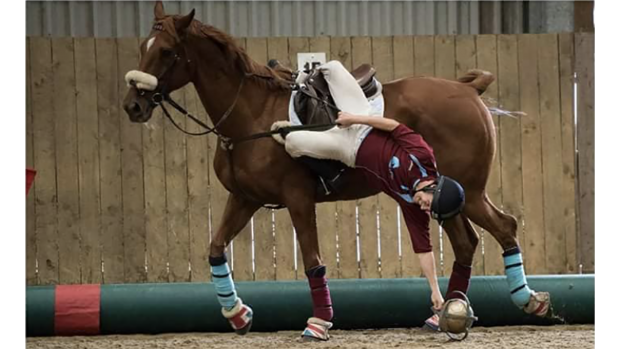Horseball is a relatively new equestrian sport, first played in France 20 years ago, and introduced to Britain in 1991 at the Horse of the Year Show. Invented by French riding instructor and rugby player Jean-Paul Dupont, horseball has been described as a cross between rugby and basketball on horseback. It was developed initially as an exercise to improve the skill and discipline of horse and rider, but it soon evolved into an exciting spectator sport.
How big is the sport in Britain?
After horseball was introduced to the UK, a group of riders got together to form the British Horseball Association (BHA), which now has 200 playing members and a loyal band of supporters. There are teams countrywide, and the sport is being rapidly taken up by riding schools and universities.
The BHA sent teams to the European Cup in Portugal in September, and the European Horseball Pony Championships in France in the summer. With the sport growing in popularity in countries such as Brazil, Israel and Argentina, it is hoped that next year there will be a world championships in horseball.
How does the game work?
A match consists of two halves, each 10min long, with a three-minute half-time period. There are two referees – one mounted and one on the ground at the side of the arena.
Each game consists of two mixed teams of six riders, who play to gain possession of a ball (the size of a junior football) specially fitted with leather handles, and to score in the goals at each end of the arena. The goals are hoops one metre in diameter, suspended on 3.5m poles. Only four riders are allowed on the pitch at a time, but substitutions can be made during the match.
The game is fast-moving, with a minimum of three consecutive passes before a goal can be scored, and the ball must not be held by any player for longer than 10 seconds. If the ball goes out of play, the game restarts with a line-out.
The opposing players may intercept, tackle or retrieve the ball if it falls to the ground. This is done while the riders are connected to the horse only by their stirrups, which are joined together by a strap under the horse’s stomach.
Can anyone play?
The minimum age for players is eight years old, and children play at cadet level, for 8- to13-year-olds. Junior level is for players under 16, and senior for those aged 16 and over. Competitions for ladies only have recently been introduced, and the British ladies’ team is enjoying considerable international success.
Despite the fast-moving nature of the game, there is a strong emphasis on child protection, rider safety and horse welfare. Any type of horse or pony can take part, and the majority of those used also compete in other disciplines, such as hunting, dressage, show jumping and even racing.
Mary Pettifor, chairman of the BHA, says the association encourages riders to use their horses in other sports, especially dressage: “Dressage training is particularly important to develop turns and obedience,” she says. “Speed is essential, particularly at the higher levels, so it is vital to combine this pace with control through flatwork.”
How can I start playing?
Many riding schools offer lessons and clinics, and the association has a list of registered trainers who are available to come out to groups of riders who want
to learn the sport.
If you don’t have a horse or would prefer not to use your own, contact the BHA through the website, and it will put you in touch with riding schools that offer lessons on hired horses. The association also runs clinics throughout the year; prices vary, but the average cost is £15.
Where can I find out more?
For more information, visit: www.horseball.org.uk or contact the chairman, Mary Pettifor, tel: (0115) 966 4574, or email: arkenfield_racingservices@btinternet.com
|





